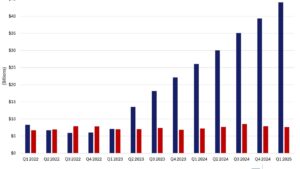The title is intentionally confusing.
Introduction:
One of the most challenging parts of trying to evaluate the stock market is the second-order game of figuring out what everyone else is expecting. I’ve seen uncertain situations where we got the “bad” outcome and the stock went up on resolution of the uncertainty (even if it was the resolution people hoped to avoid). I’ve seen companies miss earnings estimates, lower guidance, and have the stock go up because people feared worse results (Nvdia last week). I’ve seen companies beat earnings estimates, raise guidance, and have the stock fall because the “whisper number” was better. Frequently, people aren’t focused on actual fundamentals; but rather, focused on the expectations of everyone else. This then leads to the third order game of “well, if everyone is expecting something great, and they know they can be disappointed…” and so on.
Here’s What Happened Today:
Today was a perfect example of this thinking in action. The past few times Federal Reserve Chairman, Jerome Powell has spoken, he clearly indicated he is focused on reducing inflation by raising interest rates. Somehow, the market keeps hearing that when the data shows that inflation has come down, the Fed will stop raising rates. This is by definition true. We often accuse the Fed of having no idea what they’re doing and missing economic conditions that to us, seem obvious. However, we would never think they’d get inflation under control and keep raising rates in order to cause deliberate economic pain. Market watchers have been acting like Powell saying he’ll watch the data is the same as him saying they’re done raising rates. In fact, many are already penciling in rate cuts in 2023. We’ve been skeptical of that thinking all along, and have held an enormous short position against the market all year.
Yesterday, in advance of Chairman Powell’s speech today, several market pundits and economists were writing that so many people expected Powell to be incredibly hawkish that they thought anything Powell said would be softer and that would cause the market to skyrocket. (Hawkish means favoring more interest rate hikes.) Let’s go through the thinking here:
– Inflation is a huge problem meaning everyone knows the Fed needs to raise rates.
– Powell has make it explicitly clear that he’s more focused on getting inflation under control by raising rates than he’s worried about causing a recession (already in progress according to us and the actual definition of recession).
– Everyone expects Powell to deliver hawkish remarks (saying he plans on raising rates).
– Therefore, when Powell delivers hawkish remarks, it won’t be as bad as everyone expects, therefore, the market will go up even if Powell says he’s going to continue raising rates.
Depending on how you’re counting, that’s ether third or fourth order thinking where everyone knows rates have to go up, but they’re expecting them to go up less than everyone else expects so even negative comments are “good” for the market. If you don’t completely understand this, don’t worry. It’s not supposed to makes sense (and yet is an accurate description of the public conversations about such things).
Conclusion:
So, here’s what happened: Powell delivered the expected hawkish comments. He said that the recent decrease in the huge rate of inflation (a second derivative itself) wasn’t enough to think inflation is under control therefore, the Fed will continue raising rates even if it causes economic harm including higher unemployment. This is exactly what we expected him to say because that’s exactly what he’s been saying for months. The S&P 500 responded by falling 3.4% on the day and the NASDAQ was down 3.9%.
To recap:
– We got the hawkish comments everyone expected…
– Which was supposed to make the market go up because everyone was expecting it…
– And the market had a huge down day after a huge down week.
And What To Do Now:
This week (and today in particular) were only bad if you’re not a DKI subscriber. Our general process is to try to look through all of the expectation about exceptions and do the actual fundamental analysis. As we’ve pointed out many times, real interest rates (Fed funds rate less CPI) are negative. Real real interest rates (Fed funds rate less actual inflation) are hugely negative. The Fed funds rate is still below 2.5% which is very low by historical standards. The Fed balance sheet is still around $9 trillion (trillion!) dollars. And Congress continues to pass new programs throwing additional trillions of dollars into the already expanded money supply. OF COURSE inflation is high and OF COURSE the Fed needs to raise rates. This is why the market short has been our largest position all year.
If the above is confusing to you, it simply means that you’re a reasonable and rational person. Still, feel free to send questions to IR@DeepKnowledgeInvesting.com. As always, we’ll continue to follow the subject closely and keep you updated.



